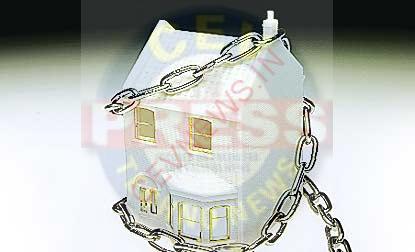A notification from the income tax department has exempted annuities and extended the scheme to the lifetime of a borrower. The core issue,however,is that the scheme has not taken off.
The income tax department on October 22,notified that annuity payments to the senior citizens availing of the reverse mortgage scheme (RMS) would not be taxed. Not only that,the scheme which was so far available only for 20 years,will now be available for the entire life of those taking the product.
The move is though expected to provide some momentum to the scheme,which was launched in 2007 but is yet to pick up,what is needed is,say experts is the creation of awareness about the scheme.
The scheme was launched with much fan fare in 2007-08 with a view to provide some succour to senior citizens,ie. those above 60,who in many cases,have no one to fall back on for their monetary needs.
According to the National Housing Bank (NHB),which administers the scheme,around 7,200 people have availed of the RMS facility since its inception and banks have so far sanctioned only Rs 1,800 crore and disbursed Rs 800 crore under the scheme.
Though a large number of public sector banks have announced the scheme,not many have actively worked on it. PNB Housing Finance has so far received only 130 cases worth Rs 20 crore,a very insignificant amount when,according to NHB conservative estimates,the potential reverse mortgage loan market is Rs 20,000 crore.
According to the scheme,those in need of money can mortgage their property with a lender (scheduled banks and housing finance companies) and receive regular payments from them in form of either instalment or in lumpsum.
The loan is not to be serviced as long as they are alive and occupy the property. The maximum period of the loan hitherto was 20 years. Now,after the Central Board of Direct Taxes notification,it will be for the lifetime of the borrower while LIC and other IRDA-registered insurers have been included as annuity sourcing institutions. On borrowers death,the loan is repaid through sale of property though heir can repay the amount and retain the property.
Earlier,though as per Clause (xvi) in Section 47 of the Income-tax Act,1961,the transfer of property was not considered a transfer and was exempt from capital gains tax,while loan instalments,received under the scheme amounts to income was not included in total income,the products had few takers due to several problems.
While the annuity paid by banks was quite low and was tax free,if the bank tied-up with an insurer,the annuity amount was though higher but taxable because it was not considered as loan but interest.
By including LIC and other insurers as annuity sourcing institution and making annuity payment tax free,the government expects positive response for the scheme.
The scheme has been touted by many as social security for senior citizens,something that provided them regular income without the unnecessary hassle of taking loans.
Sanjay Dutt,executive managing director of Cushman and Wakefield says the product is excellent but banks need to build confidence of consumers in such product and create awareness about it. Along with the fact that India is largely a young nation and senior citizens are relatively in minority,people in the country still believe in keeping hard assets, Dutt said adding that RMS necessitates,in a way,surrendering the property to lenders,that is banks and housing finance companies. Nobody wants to be the first victim of the unknown animal. There is lack of clarity while also there have been no incentives to people due to which they have kept away from the scheme.
Dutt adds that the mortgage penetration in India is only 6 per cent as against 15-20 per cent in the US.
A senior official of a leading public sector bank said that a crucial factor,which critics of the policy overlook,is there is social cost to the scheme. Indians still have attachment to their property. Most of the people who have taken reverse mortgage loan from us are from Mumbai and not Delhi because of cultural differences. Also,not much has been done on the awareness front. The scheme suffers from lack of education and awareness, the official added.
NHB chairman and managing director R V Verma said that the scheme has seen lukewarm response as it was catering to the first generation of senior citizens who have to be fully sensitised about its nuances. We were also very conscious about the sensitivities cultural and emotional associated with the scheme and went about presenting the scheme before the senior citizens community and other stakeholders in a very measured way. We have been careful in marketing this scheme as a purely need-based support to the senior citizens, he said adding the recent tax break would go a long way in popularizing it. The NHB will collaborate with other stakeholders including banks and insurers to create awareness about the scheme and implement it across.
One glitch however remains. Currently,borrowers can get a maximum loan of 60 per cent of the property. The public sector bank official said that if this issue is also taken care of,the scheme has good chances of flourishing

